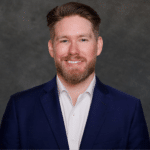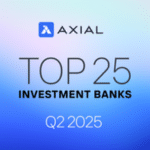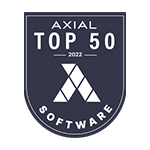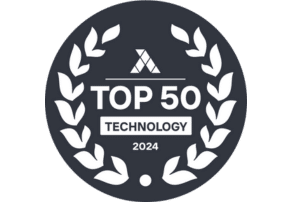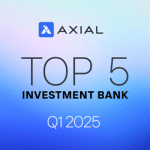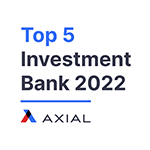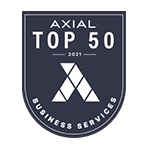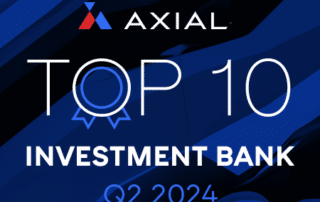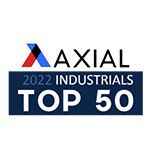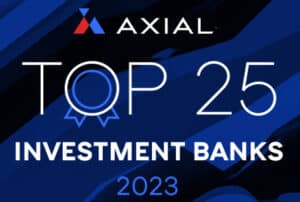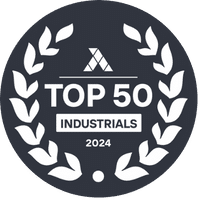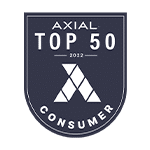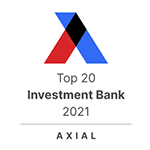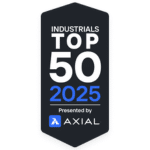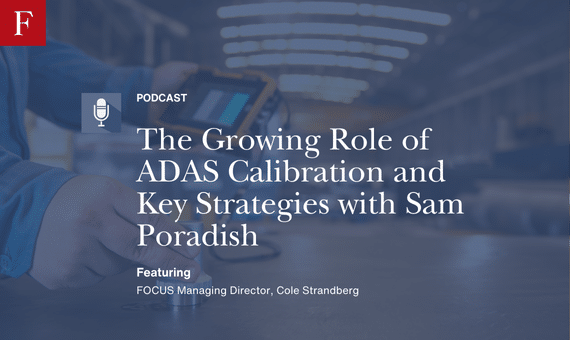
The Growing Role of ADAS Calibration and Key Strategies with Sam Poradish
In this episode of the Collision Vision driven by Auto Body News, we’re continuing our Technology Takeover: The Impact of ADAS & Calibration series with another deep dive into the evolving world of ADAS calibration. Our guest is Sam Poradish, Director of Automotive Intelligence at Repairify, a company leading the charge in advanced diagnostics and calibration solutions for the collision repair industry. As ADAS technology becomes more advanced and widespread, shops that embrace proper calibration processes have a massive opportunity ahead—but they also face challenges in execution, equipment investment, and reimbursement.
Sam Pradesh: So my name is Sam Pradesh. I’m the Vice president of Insights and Innovation at Repairify. A little bit about my background, I worked at a mechanical shop for several years before I kind of moved over to the the technology sector. So many ASE certified master mechanical repair and collision technician actually started at Aztec seven years ago as one of the remote technicians that was providing OEM diagnostics to our customers and have kind of since then just evolved into my current role, which is overseeing some of our software development technologies, our data science initiatives and analytics.
Cole Strandberg: Beautiful. So often when I’m talking about this industry as a whole, it’s like, oh, this is totally different. The the word tech technicians as we think of has evolved into a lot of technology and it sounds like you sort of check both boxes and and cross across that spectrum. That’s perfect. Obviously, a major part of our conversation today is about the ADOS calibration space. So set the scene for me. You’ve been around this world for a little while. How has, in your view, the ADOS calibration space evolved here over the last five years? Call it.
Sam Pradesh: Yeah. So I think really probably the most tangible change for everybody in automotive repair, like mechanical collision alike is just the prevalence of of ADOS equipment and how often it enters the conversation. I mean, you know, I still remember back in the day when I got I did my first transmission change that required a transmission programming and that was a big, you know, just change in technology that I wasn’t expecting and had to figure out how to solve. I think lots of shops are kind of going through this experience with ADAS equipment. They’re doing repairs that, you know, they’ve routinely been able to do without kind of the electronic repair component and all of a sudden they put it back together and it’s not functioning the way that he wants. There’s a dash light on and they have to come up with a solution for, for handling it. So that, you know, that always starts as something that’s just a once in a blue moon thing. But now it’s just becoming a routine report of routine part of many repairs. I think last time we, we clocked it in 2024. We’ve got some good insight to it with our ADOS think product, which scrubs just over a million estimates a year. It’s something in the ballpark of like 40% of collision estimates written now would require at least one calibration per the OEM requirements. So I think that’s probably the one that that everyone is is feeling the most in terms of the change. But then on top of that, right, you’ve also got kind of the advancement of the technology. So, you know, what was kind of once in a blue moon is becoming commonplace, but there’s these new sort of things that are popping up, new procedures, new sensor technologies and things that are requiring, you know, increasingly advanced equipment and training and all that stuff. So it’s just kind of a a steadily advancing front on the technology spectrum as well.
Cole Strandberg: No question. Fascinating to see what that chart looks like as that percentage has increased over the years. And I’m sure it’s crazy and I’m sure it’s going to continue to get even steeper and crazier. That curve is just going to speed up. And I think there’s this threshold that we as an industry have to cross and we might have crossed it or we’re getting close to it where it changes something from a challenge into more of an opportunity from a headwind into a tailwind. So to that, when you kind of put your shop owner hat on, what do you view the opportunity of ADOS calibration moving forward?
Sam Pradesh: Yeah. Well, I think you hit the nail on the head, right. Like it, it used to be something I think that you could reasonably just seek to outsourced to somebody else because it’s not something that really was a part of your everyday routine and something that you had to have planned into your workflow. But you know, when you’re at the 40% mark and like that’s, that’s not slowing down, It’ll be 100% eventually. And we’ve seen it already up tick, I think 10% just over the last couple of years from 30% to 40%. So you know in that paradigm, right, it’s not something I think you can ignore as a shop owner because you don’t want to be outsourcing something like that, which does have the opportunity to be a significant profit Center for shops on every repair order.
Cole Strandberg: Well, I’m happy you mentioned the profit piece and the outsource piece. What are some common misconceptions that shops might have when on the fence about entering the ADAS space and taking that profit for themselves?
Sam Pradesh: Yeah. So I think probably the most common misconception we see has to do with what we were just talking about just the the prevalence of calibrations. We know from like data that CCC released and dated that we can see kind of within our systems and aid us think that we know that the bar should be here in terms of how frequently calibrations are required on vehicles. But then if we look at estimatic data as to how often it’s actually being written and theoretically performed, it’s quite a bit lower than that. So I think there’s still a problem with shops recognizing, you know, on a case by case basis when calibrations need to be performed kind of that that statistical gap between the two. It’s become a part of conversation, right? I think everybody knows the calibration should be part of repairs, but we’re still not seeing kind of anywhere close to that 100% of everything that should be done per OEM requirements actually being written and performed. Which either means, you know, systems aren’t being repaired to OE spec, which is a safety and liability concern or shops are doing them and not recognizing them that they can be a profit center, you know, which also becomes a problem for them overtime. But I think kind of conversely at the same time, we’ve got sort of an an overestimation of the barrier to entry for performing these. Everyone’s kind of familiar with the advanced targeting systems and all of the specialty expensive equipment and training that goes into using those. But dynamic calibrations, which is actually kind of the the fastest growing sector of the space can really be performed with just an advanced aftermarket tool or access to an OEM tool, either by, you know, having it physically next to the car or remotely. So, you know, we see a lot of that where shops I think look at just the entire calibration problem and, and paint with too broad a brush and say, like, I can’t deal with everything. Therefore, I’m going to come up with, you know, an outsourcing solution for all of it. When really there’s, you know, opportunities to do things like maybe you don’t have the facility space with the lighting conditions or whatever it is to actually dedicate a spot to static calibrations in your shop. But still like dynamics, which just require a drive cycle and a scan tool on a lot of cars. Like that’s an opportunity that almost every shop can kind of get into and handle in house.
Cole Strandberg: Well, you bring up a question that I’m, I’m dying to ask, but I think it’s important first to set the stage a little bit about what exactly you guys do, right. I think the industry overwhelmingly knows who repair if I and Aztec are, but what’s how would you and your words kind of describe the value proposition of how you help shops get into this business and succeed in this business?
Sam Pradesh: Yeah. So I think we really have kind of solutions for every step along kind of the evolution of of shops getting into the space. For me, it all starts with ADOS think, which is really kind of the the entry point I think for a shop getting started in calibrations. It all begins with just understanding when they need to be done and what’s required when they need to be done, both in terms of, you know, equipment, facilities, training, etcetera. So just getting kind of efficient visibility to when those things are required and what you have to have and be able to do in order to, you know, perform a calibration in spec. I think it’s kind of what starts all those gears turning about how do I, you know, get this into my workflow and make it a part of of everyday life. So AI think, I think it’s kind of, you know, is the first product that was an estimate scrubber that made it really just fast and automated for shops to get quick access to the documentation. They need both to justify the repair by providing a position statement, but also get access to the early repair procedure so they can see all the requirements that need to be performed. So it all starts with that, but I think as soon as you know that it, it opens the door to a lot of other questions, which is OK. And I, I know what I need to do, but how do I do it and what equipment is going to be required, What expertise is going to be required? So inevitably a big component of that is access to scan tools that are capable of, you know, performing these functions, both commanding a sensor to read in a calibration profile in the event of a static or putting a vehicle in a dynamic calibration mode in the event of a dynamic for the drive cycle. So a lot of aftermarket tools are starting to build this functionality in, but you know, as always, there’s kind of that gap at the end where OEM tools are are required for newer vehicles or newer technologies. And so repair if I obviously has kind of been closing that gap for a long time, our all in one tool now kind of provides a professional grade aftermarket tool in conjunction with access to remote OEM tools. So that’s a a product that really just wholly solves the scan tool problem and provide shops with an option to command whatever calibrations are are required. But then we’re also kind of providing programs to get shops kind of like financial assistance with financing some of the calibration frames and targeting packages so that they can get started without as much of an upfront investment. And we provide training as well on site in those instances to go assess the space and make sure that their facility is actually appropriate for performing them. That that’s another kind of common misconception is a lot of people think they could just go buy a targeting frame and stick it anywhere and it’s, it’s going to work. But you know, they require quite a bit of space actually to be able to position them for all the different blind spot and radar and, and camera procedures. Lighting is also critical for, for camera calibrations. We see a lot of people like setting up targeting frames outside interact sunlight, which is, I haven’t read an OE procedure which says that’s OK yet. So, so yeah, it, it really I think is kind of an end to end thing depending on if shops want a complete solution for doing everything in house, identifying performing dynamics and statics and getting the required equipment and training. But you know, we also kind of help shops just go as far along that path as they want or are able to.
Cole Strandberg: You know, it’s, it’s when I think about the ADOS calibration space, sort of a new frontier, new ish at least, right? It’s not a new thing, but the, the level of prominence and regularity that that we’re seeing with calibrations, it’s growing at such a rapid pace that it sort of feels new every year. And we still do paint in that broad brush. And I think so many of the conversations we have around the spaces, you know, we know about all the facility requirements and the space requirements and it’s sort of this binary, can I do this or not? It sounds like from your perspective, maybe you can’t do some things, but you can do other. Are there any shops that that just aren’t a fit or any types of operations where it’s like we can’t do this?
Sam Pradesh: Yeah, I, I think it’s really those statics are, are kind of the the crux, right. Like we whenever we’re kind of engaging with shops to provide a, a static solution, the first thing we do is take somebody out there to go assess the space and like try to kind of ideate with a shop about how something can be configured. Like best case scenario is a shops like all in on it and they want to dedicate a space just for performing calibrations and they have the volume to supported. Some of those shops even like really see it as a profit center and they, you know, invest in kind of dedicating a calibration space, do their own calibrations and then take calibration work from other shops in the area that, you know, might not be able to dedicate the same space. But you know, we’ll work with them too. Like maybe they have a space they use for other things, but you know, can be kind of converted into a calibration space. But it’s the statics that really have kind of the most stringent facilities requirements, I think, and, and need kind of that assessment to make sure that your shop’s set up in a way that would support it dynamics. I really feel like those are something that every shop should be looking at and and handling themselves just because it’s really just that scantal component that you need to solve for in order to be able to do them.
Cole Strandberg: Makes total sense for the shops that are maybe considering getting in at at least a medium amount of investment and maybe that high full blown solution. What are some of the first steps that shops should take when embarking on that process?
Sam Pradesh: Yeah. So I think I mentioned earlier like I really think 8 US think or or a product like it is, is the entry point, right. You got to understand kind of when things are going to be required and not all shops work on exactly the same mixture of vehicles too. Like we kind of have an average car park for everybody that we, you know, we tend to apply, but there’s a lot of specialty shops that are working on just European vehicles or other things like that. So understanding what your customer base kind of requires in terms of calibrations, I think is important in making decisions around what you want to invest in. So just that’s a kind of simple, easy, cheap thing to get started with and, and gives you data to help come up with an implementation plan and make decisions about what’s, what’s financially sensible for you. So that that’s definitely where I would recommend people start. But then I think working on dynamic calibrations is is definitely kind of the right entry point as far as actually capturing some of that calibration revenue.
Cole Strandberg: I think I’m going to give this caveat a lot throughout our conversation. Sounds like there’s a sliding scale and that applies to revenue and profit opportunities and of course to the cost associated with that and the investment into the right equipment. Talk to me about how shops should approach the investment in equipment and the investment in training as they’re gearing up to really go into this business fully.
Sam Pradesh: Yeah. And I, I think investment is exactly the right term, right? Like you can look at it as a cost, but really I think investment is the right way to frame it. And again, like, hey, I think dynamic calibrations, these are kind of like cheap and generic when it comes to equipment to enable them. And I think everybody should be doing that. Statics is really where you kind of get into that 10s of thousands of dollars in calibration frames, OE targets, targeting systems, etcetera that you need. So once you kind of have an understanding of if your business is going to be able to support the demands to justify that investment, right, I think you can kind of do the math on on if it makes sense. And that’s one of the areas that we work with shops on, right? Like we’ll get them set up on 8 US think we’ll look at the data that’s coming out of their estimates. We’ll help them understand kind of what the the top line revenue opportunity is. And then we, you know, help provide them with all the equipment required. So we’ll set them up on plans where, you know, they pay us a subscription fee basically for a period of time. It’s essentially like financing the calibration equipment for them so that they can get started earlier, start capturing some of that revenue. And they don’t have the, you know, eighty $100,000 upfront bill associated with buying something like a a true point and getting started with it. So I think, you know, it, it’s critical to us as a partner with our shops that it’s something that’s making money for everybody. So we, we always start with that, right, Making sure that they’re going to generate enough business to support it. But, you know, once you do the math on it and can kind of prove out the model, we just try and make it something that can be an immediate profit Center for them, not just a, you know, a revenue center that will pay back in in 12 months so that it’s just more accessible to everybody.
Cole Strandberg: Talk to me about the ROI component. We we talk about math and that is all it is. But it sounds like you guys help out with that equation a little bit. What is that kind of conversation look like as you are evaluating the cost versus the future revenue and and profitability? And can you give an example of kind of what that thought process might look like?
Sam Pradesh: Yeah, I think it’s mostly about volume, you know, because there’s kind of like a fixed overhead cost and in getting the equipment, however you get it, whether you’re going to invest in it yourself or you know, work with us to kind of finance it over time. Like there’s still that, you know, either upfront or monthly cost. And you need to know like how many calibrations you’re going to be doing using that equipment, which I think is another key component, right? Like 20 calibrations isn’t just. So all twenty of those are offsetting the cost for my static calibration frame, right. If only five of them are actually targeting calibrations and you could have done the rest with just a scan tool, then really only those five are, are kind of offsetting your cost. So, you know, our, our pricing is pretty standardized across the board. So it’s relatively easy to, to do the math on kind of here’s how much we’re going to bring in, here’s how much the cost is and just ensuring that there’s enough calibration work coming in to offset that is, is usually where it’s focused. And and that’s where it kind of some of the conversation comes in about like if shops really want to dedicate like a technician in a facility to doing calibrations full time, we can even kind of boost that profit margin higher by giving them the opportunity to serve as like a. You know, a mini calibration Center for other shops in their area. So we’ve seen a lot of shops be really successful with that kind of like hub and spoke model as well.
Cole Strandberg: And we talked about the cost, we talked about the revenue, but obviously a big part of revenue is actually getting paid. And from what I’ve heard and what I know about the space, A word that comes to mind regularly is documentation. So from your perspective, what role does documentation play in kind of ensuring that insurance compliance and we’re we’re getting paid?
Sam Pradesh: Yeah, I think it’s pretty much everything like I, I, I’ve never seen a shop that’s got a really good system for getting OE documentation either in the form of a position statement or a repair procedure into the hands of, you know, the adjuster from the carrier. That’s, that’s asking them about the validity of the, the calibration need have like pervasive issues with reimbursement. Conversely, like everyone who’s not doing that seems to have a problem with it. So I think, you know, there’s exceptions to every rule, but on the whole, I think carriers in general, they want to pay what they owe, right? And they don’t want to pay what they don’t know. They’re just as, if not more confused about those requirements than anybody else in the space right now and kind of trying to understand what needs to be done and when and what fair market value for it is and, and all those fun things. And documentation really just simplifies that conversation and makes it objective as opposed to, you know, kind of he said, she said thing about if it’s required or not. So anytime I think you can go straight to the OEM documentation in the language within it that’s kind of driving you to perform the calibration, all that gets a lot easier. It’s very difficult, I think, for someone to argue with an OE branded position statement that’s publicly available that states clearly that a calibration needs to be done when certain conditions are met. There’s some nuance in it, right? Like some of them reference things like minor structural damage or other things like this that, you know, you can have an argument about if it’s minor or not. But on the whole, right, I think that’s that’s really the crux of the reimbursement issue is proper documentation. And this is where I think tools like 8 I think and other estimates scrubbers are just totally invaluable to shops as everybody knows how to go on all data and find that stuff. But it takes a lot of time to search through and find the exact right document that that both justifies and kind of informs on how to complete the procedure. So if all that can happen instantaneously while you’re writing your estimate and have it, you know, automatically go into your claims file, it just ensures that anytime kind of a reimbursement conversation comes up, it’s right there readily available.
Cole Strandberg: I want to zoom out a little bit and and really attack the insurance conversation from a few different angles, but before I do keeping down that path of getting paid outside of documentation, are there any other best practices for shops to ensure they get paid for the calibrations they’re doing?
Sam Pradesh: So I think documentation is most of it. Obviously kind of along with that goes ensuring that you’re only writing and performing calibrations when they’re actually necessary. So we see a lot of that as well. More shops are kind of painting with a little bit too broad of a brush and just writing calibrations in when they’re not strictly necessary. So you know, obviously carriers are always going to get you for that. So just making sure that every time a calibration is being written, it’s actually required and you have the supporting documentation to justify it. Our our customers that do that seem to have like very little issue with with reimbursement.
Cole Strandberg: I’m not going to endorse this or even ask you to comment on it. But obviously when we’re talking about ADOS and and trying to get our hands around what this looks like and ensures being kind of the the ones who need to do that most, the elephant in the room is what does that look like when they do get their hands on it? And so in the interim, how do partnerships between ADOS, calibration providers and insurers impact shops today?
Sam Pradesh: So, you know, I think the importance of the relationship is really kind of getting to a point where everybody’s on the same page about it and interpreting the documentation the same way. It’s getting better, right? Like I think it kind of the outside of all of this, not everybody had position statements available. There was some kind of ambiguity in terms of what the manufacturers were stating. You know, some of these things read more like legal documents than they do repair procedures. And so kind of having that interpretation layer made things really complicated and still does to to some degree, right. And that’s where I think kind of the importance of the the partnership comes in. But the more that shops and carriers can kind of be aligned on when things need to be done and like the specifics of when conditions are met versus not, I think the easier all those conversations get. You know, insurers kind of have internal audit tools and other things that flag these automatically and site things for review. And so, you know, I think this is where technology products can really kind of help establish some standard bearers in the space and just make it so that in a lot of businesses, if shops and insurers are kind of using the same technologies in order to arrive at these decisions automatically, we can save some of the headache in the, you know, argument and education that has to go in and like get an singular estimator and adjust your conversation level.
Cole Strandberg: The education word is key and it feels like there are so many different parties that require education. Obviously the shop performing the calibrations, the O ES to an extent, right, they’re sort of educating, but as they continue to evolve, they’re having to stay educated insurers, but perhaps most importantly, the customers, right? This is the stuff that they’re having to deal with and it’s so important that we get it right. How can shops and and even zoomed out a little bit? How can the industry better communicate and educate on the value of proper calibrations to the end user?
Sam Pradesh: Yeah, I think talking about it is a, a big component of it just with vehicle owners like they’re ultimately, you know, the, the customers of the carrier. And so carriers have a pretty significant tendency to to listen to what they’re hearing from them. So we, we’ve seen a lot of customers have success with kind of educating vehicle owners on the importance of calibrations, especially when they’re getting pushed back and kind of, you know, having them kind of help lobby carriers to, to understand and perform these calibrations when they’re, they’re necessary. So I think it’s really just kind of raising awareness because definitely the least educated entity in this right now is the the vehicle owner. Like there’s, I think it’s not common knowledge to a vehicle owners that this equipment needs to be calibrated, especially when you compare it to to shops and carriers. So I definitely think the more that shops can discuss these things with customers, explain why it’s necessary, and just kind of raise awareness in the general consumer base, You know, the more that conversation happens between consumers and carriers and that gets their attention and just, you know, I think kind of pushes everybody to be better educated on it, which in turn, you know, when everybody’s kind of getting on the same page about the importance of it, I think drives the right conversation around when it’s necessary and should be paid for.
Cole Strandberg: Where do you think we’re headed kind of five years down the road from a consumer education standpoint and from an insurance education standpoint? Do you think we’re going to see some big shake UPS in this industry in that amount of time?
Sam Pradesh: Definitely. I think it’s already happening that these conversations are getting easier. Frankly, it seems like we’re starting to get past the should we pay for this at all conversation and into the how much should we pay for this conversation, which, you know, that’s a lot more complicated, but it was five years ago very much just a should we pay for this at all conversation. So we’ve taken that step at least. So I do think just the way that everything’s going and the prevalence of the equipment, it’s going to get to a point where recognizing the requirement is I think kind of standardized, automated and an easier conversation. And the conversation I think then will will shift specifically to just what’s fair market value for these things. And you know, do we expect the shops should be doing them in house or, you know, is it OK to outsource and what’s the fair market value of that? That that really seems to be kind of what’s coming to me.
Cole Strandberg: Man, that, that fair market value is simple to say, but I think there’s some battles coming ahead that that’s going to be between a lot of different parties and when the dust very, very interested to see where we land. I want to talk about some shop success stories here and and we don’t need to get into specifics with specific shops, but talk to me about some in generalities, examples of successful implementations for folks who had not been capturing that revenue and that profitability and had not been keeping their own quality of work kind of under their own management.
Sam Pradesh: Yeah. So I think I’ll kind of go back to the example I alluded to earlier where we have some shops that are really, you know, I kind of put them on like the bleeding edge of this space, right. But they, they’ve not just kind of invested in calibration identification and the ability to do dynamics and also the ability to do statics, but kind of taking that next step in becoming like an independent ADOS calibration provider to other businesses. Like we’ve got several shops that do this. A lot of them are like shop groups where they have multiple shops in an area and they’ll kind of set the facility up in one and direct work from all of their locations to that location. But then you know, the ability to kind of whenever you don’t have enough work for all of your own rooftops to solicit it from others and kind of be that Ave. of fulfillment for other businesses. Like that’s I think by far the best way to, to maximize profit. And you know, while the facility set up is not inconsequential in terms of costs, like the amount of revenue you can make on a mini calibration center if you’re keeping it busy all the time is, is really substantial. So I, I think that’s kind of in my mind, the customers that have had the most successfully, the ones that have really kind of walked all the way down that path and are, you know, capturing every dollar worth of revenue that their claims generate, both in their rooftop and other partner rooftops, but also then, you know, even within other shop groups.
Cole Strandberg: I think a lot of the conversation around ADOS calibration is, is something that paints a pretty rosy picture. I’m guilty of this too. I look at the numbers and the statistics and I see a ton of opportunity out there and I, I absolutely think that’s the case. But when you’re working with shops, are there any recurring, maybe unexpected challenges for people getting into that space that, wow, hey, I didn’t, I didn’t see that one coming.
Sam Pradesh: Yeah, I, I think so. I totally agree that it’s, it’s really easy to just kind of at a high level look at it as like, oh, look, you know, here’s some additional revenue opportunity we could capture. But that that does sort of like, I think oversimplify some of the complexity involved in actually performing these things. And certainly as the technology is getting more advanced, so too are the procedures that are required to do them properly. Like the vehicles are getting more sensitive. Dynamic Dr. cycles are ones we we hear about all the time, kind of understanding everything that has to be completed in those. Like those are really interesting because I think, you know, in our industry there’s like book hours on everything. And so it’d be really lovely if we could just say, you know, doing a dynamic drive cycle on a, you know, 2023 Chrysler Pacifica to calibrate the front radar is like one hour, right? But the types of things that have to happen in that drive cycle are it may need to see certain Rd. signs or it may need to spend, you know, a certain amount of time on the highway, or they need to spend a certain amount of time behind another vehicle. And like, depending on the locale that you’re in as a shop or even like environmental conditions or another fun one, like if you live in an area where there’s 4 feet of snow on the side of the road and it’s, you know, covering up half a road sign, that makes it really, really difficult to complete a dynamic drive cycle that requires seeing those. So we definitely hear some horror stories on kind of those fronts of like, we just think it’s going to be really easy to do these things and it’s going to be a, you know, routine exercise. Certainly, as shops become kind of more experienced in them, they’re, they’re able to kind of get through those things more efficiently as as you sort of get the muscle memory and understanding of what the vehicles looking for. Some of them are kind enough to kind of like within the scan tool, give you step by step instructions and little real time check boxes as to if you’ve met the conditions that help kind of guide what you’re doing. But in general, like just the, the specifics of actually performing the procedures are, are really important to understand and, and a common challenge. And, and that’s where I think training really comes into play, right? Like just getting the equipment and going to tackle them. That’s definitely a big part of just enabling it. But you need somebody who’s really going to kind of specialize in understanding the nuance of how all these things are are performed in order to perform them successfully the first time, right? You also don’t want to, you know, go calibrate a vehicle with an empty fuel tank only to find out that it was improperly calibrated and you got to go fill it up and do it again. Then you’re you’re kind of cutting into your profit margin because you’re not completing things in kind of a cycle time that’s that’s possible. So training that I think is the solution.
Cole Strandberg: There are so few things I feel like in the world that if you Google a problem, somebody has not had that problem before. Like everyone has almost had every problem in history at some point where there’s something to know, but we’re getting there. But I get the sense that the ADAS calibration space is this combination of new and so rapidly evolving that I’m sure everyday somebody has a brand new challenge that nobody has ever had before, which is both cool and kind of terrifying.
Sam Pradesh: Yeah, for sure. And I think too, this is where like things like having access to a remote technician who does these things in partnership with lots of shops in lots of different areas on a diverse array of vehicles everyday can really come into play because it can take a really long time to kind of build that expertise in house by getting exposed to like every manufacturer does it differently. Like, OK, yeah, we say statics are all similar, dynamics are all similar, but Chrysler dynamics are different than Ford dynamics are different than GM dynamics, etcetera. So you know, it’s just like any repair across manufacturers, like you can know how to do it, but understanding how to do it, you know, quickly and efficiently requires kind of having done something similar to it before. And every manufacturer and every vehicle to some extent is is different. So this is where I think kind of centralizing some of that knowledge and having access to that centralized knowledge can really help expedite kind of just both educating shops on on having in house expertise. But it ensures that you don’t have to kind of, you know, experience all those growing pains yourself, right, The first time that you attempt these things.
Cole Strandberg: We’re all rowing the boat in the same direction, right? Or the at the end of the day, our goal is to return a properly repaired back to original condition or as close to as possible for our our end user, for the people driving these cars needing to stay safe. So pooling resources, making sure you’re on a team makes total sense to me. We talked about one of, I think 2 elephants in the room for the future of ADAS calibration and that of course, being insurance. I think there’s another one too, which is the technology. And, and I don’t know, we talked about your career trajectory. I, I didn’t do the math to put years to that, but it seems like 2017 is sort of when a lot of these tools came to market. And frankly, if memory serves, they were branded as kind of a short term opportunity with eventually this technology is going to get so good it’s not required. Talk to me about your thoughts on the longevity of maybe brick and mortar calibration.
Sam Pradesh: Yeah. It’s a really interesting question because I think definitely some of the conversation we were having seven years ago, we’re still having some of it’s changed pretty dramatically. One of the things we’ve kind of recently done a study on and have been sharing in a lot of events that we do that I think is is interesting and kind of like disrupts a lot of people’s sort of assumptions about the calibration space is I mentioned it earlier, but dynamic calibrations are growing really, really rapidly. If we kind of breakdown by model year what calibrations are required on specific vehicles. We’ve gone from dynamic calibrations in 2017 representing I think like only 20% of the calibrations that needed to be performed to nearly 50%. Now some of those thankfully are are kind of in this new category that we refer to as static or dynamic. This is really like a calibration that the manufacturer perform prefers be performed with a dynamic drive cycle. But like I was mentioning all those issues, they can kind of pop up with environmental conditions and dynamic calibrations. Now they’re providing kind of the option to do it with a static target instead in the instance that it’s impossible to complete the dynamic drive cycle. But in general, just between those static or dynamics and just traditional dynamics, we’re seeing that grow dramatically. So I do think there’s a question with the, you know, investment in static systems as to, you know, how long of a tail do we really have? I would say it’s nowhere close at this point to where people should be concerned with making the investment. Obviously, like things that are happening on 2025 model year vehicles, it takes quite a long time for those vehicles to routinely show up in, in collision shops and and be repaired. There’s there’s kind of a lag on that. So very much still static calibrations are going to be a part of everyday life. The interesting question is going to be like as new capabilities and technologies become available and new sensors are powering them, we’re starting to see a LIDAR pop up a lot more on vehicles. Like we really don’t know where that’s going to land yet. And it’s all kind of a function of how the manufacturers build them, right? Like it wouldn’t surprise me at all if new technologies came out and there was a, you know, resurgence of static calibration procedures just because it was necessary for that. That type of sensor kind of on the other end of the spectrum, you’ve got some of these sensors moving towards being self calibrating, right? Like some of the more like disruptive technologists in the space like Tesla and the other EVs are actually adopting like fully self calibrating systems where it’s, you know, it’s essentially a dynamic calibration, but it’s self initiating and self completing. It’s just you give the car back to the customer and they drive it for a while without the systems working and then, you know, eventually the light goes on and says, OK, we’re done, everything works again. So it was really interesting to watch. I will say it’s big ship, slow moving. I don’t think we’re going to see any instances where like tomorrow there’s a dramatic shift in kind of the nature of calibrations, but it is evolving. And we certainly could get to a point where blend turns back in the other direction and static is, is growing. Or, you know, there could be a future 10/15/20 years down the line where there’s enough sensors on the car that they can all calibrate against one another instead of, you know, externally placed targets and and self calibrating kind of becomes the norm. But. You know, I think as everybody knows with the OES, they don’t really do anything quickly. So we’ve got quite a bit of time before there’s any seismic shifts, I think. And we’ll we’ll see them coming from a mile away.
Cole Strandberg: Man, one thing is for sure, I think for anybody attached to this industry, it’s going to be a wild ride and and probably a fun ride. And as my head is spinning listening to you talk, I’m just thankful that present company included, we have a lot smarter people than me working on making sure we are we’re going to handle this correctly as it continues to evolve to that. Talk to me a little bit about what you and and your team are doing to stay ahead of the curve of some of these changes. How are you guys tuned in to make sure we’re equipped as an industry to handle it?
Sam Pradesh: Yeah. So we, we spend a lot of time, you know, just doing exploratory analysis on the data that’s available to us, like ADAS think kind of provides an amazing insight into what’s going on with the industry as a whole because it has those OE requirements baked into it. And we see like a massive volume of estimates come through and, and understand kind of what’s required. I also manage the team of content authors that go through and, and administer all those rules. So we’re, we’re constantly looking at new releases of position statements and repair procedures from the O ES and trying to get ahead of, of what technologies are coming and what’s going to be required by them. So, you know, we, we just try and keep our ear to the ground in terms of what’s getting released. And so, you know, it’s both kind of building out that product to ensure that, you know, every vehicle that goes through it, I think has accurate OE logic being applied to it. But that really helps kind of inform us as to where we need to be focusing attention on, you know, equipment that we need to go test and study in our kind of R&D facilities and you know, eventually provide to our customers so that they’re able to handle new calibration procedures that are are upcoming.
Cole Strandberg: A lot going on. Good to hear it. And man, you’ve been so generous with your time. At the time of this recording, it is late on a Friday afternoon, so I appreciate you sticking with it and the fact that your mind is still working as well as it is. It’s blowing my mind. Let’s put a bow on this conversation before I exchange some contact info with you. And, and that is All things considered, what advice would you give shop owners to ensure they remain competitive as this landscape changes so drastically?
Sam Pradesh: Yeah, I think really it’s just, you know, get started or take that next step. Like like we’ve touched on in many elements of this conversation, like this isn’t going away. Calibrations, electronic repairs in general are going to be a part of everyday life. I think for most shops, it’s kind of a part of everyday life already, but it’s going to become a part of every claim I think at some point. And the good news is, like, we just talked about, like it moves slowly. We’re going to have some, you know, some foresight, I think into what’s coming, but you know, either gaining the expertise in house or partnering with somebody that has it and getting started and just seeing what comes in and understanding how it’s evolving. I think is is really important. You don’t want to get to a point where you know, half your claims having to be done by somebody else because you don’t have the stuff in the house. And there’s a lot of overlap to in terms of like static stuff is is pretty niche and specific to certain sensors and O ES, But like having a scan tool solution that you know, gives you the ability to kind of do things quickly with a capable aftermarket tool and then also gets you access to OEM tools for that. That cap coverage element is really critical because there’s just so many things in addition to calibrations to that require advanced OE tools and advanced knowledge of how to use them in order to perform. I mean, I remember when I did my first like brake job where I took the Caliber off of a Mercedes and snap closed because somebody needed to go set the ABS pump to brake job mode. Like things like that are going to keep popping up where you’re not going to be able to do things traditionally the way that you’ve you’ve always done them. There’s going to be some electronic component associated with it just both because even traditional internal combustion vehicles as well as like the increase in hybrid and electrified vehicles is, is coming. So I really think it’s just if you haven’t started already, get started, partner with somebody sent people to training. But you know, if you’ve started to dabble, just focus on taking the next step because I think it’s a never ending journey, right? Like the, the front is advancing. There is no like finish line where you’re an expert in in electronic repairs. There’s just always going to be something else on the horizon. So getting started and taking those steps I think is everything.
Cole Strandberg: Eloquently put. Thank you so much for your time today. I’m going to ask you guys to load me up with some links for everything that we’ve talked about so we can incorporate that in the show notes in the meantime, for people who want to get in touch with you or learn more, where can they do that?
Sam Pradesh: Good question. Not really on social media, but we can probably give you my e-mail address, yeah.
Cole Strandberg: Perfect, perfect. I’ll load us up in the show notes with some good information for folks to learn more. Reach out to you with any questions. Sam, it’s been an absolute pleasure. Appreciate your time and thank you so much for joining us here on The Collision Vision.
Sam Pradesh: Yeah, likewise. Thank you so much for having me.
Listen and Follow The Collision Vision.

